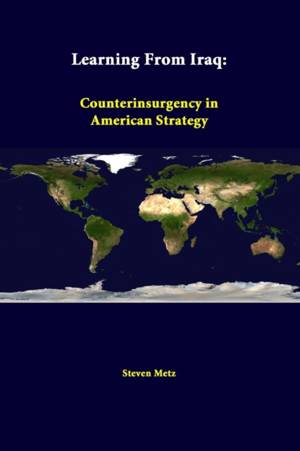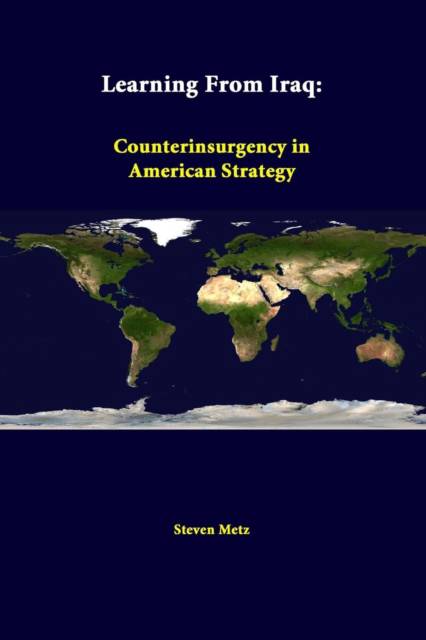
- Afhalen na 1 uur in een winkel met voorraad
- Gratis thuislevering in België vanaf € 30
- Ruim aanbod met 7 miljoen producten
- Afhalen na 1 uur in een winkel met voorraad
- Gratis thuislevering in België vanaf € 30
- Ruim aanbod met 7 miljoen producten
Zoeken
Learning From Iraq
Counterinsurgency In American Strategy
Steven Metz, Strategic Studies Institute
Paperback | Engels
€ 26,95
+ 53 punten
Uitvoering
Omschrijving
During the past 5 years, American strategy has undergone a sea change, shifting from a focus on the conventional military forces of rogue or rising states to irregular challenges associated with the "long war" against transnational jihadism. Much of the new thinking has resulted from the conflict in Iraq. One result of this has been an attempt to relearn counterinsurgency by the U.S. military. While the involvement of the United States in counterinsurgency has a long history, it had faded in importance in the years following the end of the Cold War. When American forces first confronted it in Iraq, they were not fully prepared. Since then, the U.S. military and other government agencies have expended much effort to refine their counterinsurgency capabilities. But have they done enough?
Specificaties
Betrokkenen
- Auteur(s):
- Uitgeverij:
Inhoud
- Aantal bladzijden:
- 136
- Taal:
- Engels
Eigenschappen
- Productcode (EAN):
- 9781312307544
- Verschijningsdatum:
- 25/06/2014
- Uitvoering:
- Paperback
- Formaat:
- Trade paperback (VS)
- Afmetingen:
- 152 mm x 229 mm
- Gewicht:
- 208 g

Alleen bij Standaard Boekhandel
+ 53 punten op je klantenkaart van Standaard Boekhandel
Beoordelingen
We publiceren alleen reviews die voldoen aan de voorwaarden voor reviews. Bekijk onze voorwaarden voor reviews.











